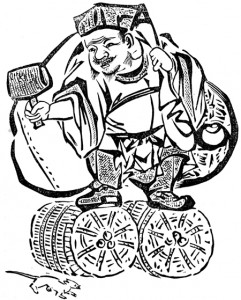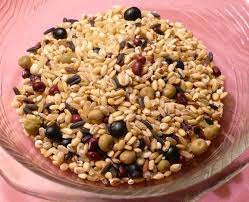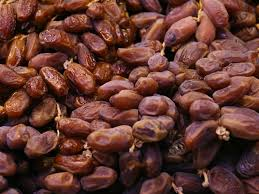 in honor of National Rice Month, we’re re-posting this article from December 2010
in honor of National Rice Month, we’re re-posting this article from December 2010
Somewhere in Asia or India between 3,000 and 7,000 years ago people began to cultivate a wild grass known as rice. In several Asian languages the word for rice and food are the same, indicating the importance of this grain in the daily diet of Asian countries.
There are several mythologies surrounding the origin of rice.
In Indian mythology the God Lord Vishnu caused the Earth to give birth to rice and the God Indra taught the people how to raise it. (I’m looking for the original story, if anyone has a link or book title, please share it in the comments below.)
In Chinese mythology rice is a gift of animals not the Gods. In ancient China there was a series of very severe floods. The story goes that when the land had finally drained, people came down from the hills where they had taken refuge, only to discover that all the plants had been destroyed and there was little to eat. They survived through hunting, but it was very difficult, because animals were scarce. One day the people saw a dog coming across a field, and hanging on the dog’s tail were bunches of long, yellow seeds. The people planted these seeds, rice grew, and hunger disappeared.
 Through the centuries, rice has been blended and cross-bred to where now there are over 40,000 varieties being grown. You can read a more in-depth description of the kinds of rice at The Nibble: Rice Types.
Through the centuries, rice has been blended and cross-bred to where now there are over 40,000 varieties being grown. You can read a more in-depth description of the kinds of rice at The Nibble: Rice Types.
Rice was one of the original crops grown by colonists and settlers on the American continent. Civil War and the abolition of slavery ended the labor-intensive rice production. It was brought back in the mid-20th century when technology could alleviate the human labor it takes to grow and harvest rice.
When I was growing up, I knew about long grain rice, brown rice, and one or two varieties of white rice. My mom’s favorite was Uncle Ben’s Converted rice. It is a no fail rice, easy to cook, quick to put on the table.
When I started learning about health and nutrition, I found out that brown rice contained more nutrients. Just like when wheat is separated from the hull and the bran, many of the nutrients are lost, the same happens with rice. Mill it, thresh it, and turn it white and there is less nutritional value. Eating brown rice provides the most health benefits, although it certainly isn’t the most fun rice to eat.
A great example of fun rices to eat are the Sushi rice types Koshihikari, or Calrose rice. Sticky and glutinous, they cling to the Nori wrapper on a bamboo mat, and hold the sushi filling snugly in place.
Some of my favorite kinds of rice are Basmati, Long Grain Brown, and Forbidden or Black rice. I rarely consume that bag of “enriched bleached” white rice sitting on the grocery store shelf. I usually buy my rice in bulk, or go to the Thai market in my neighborhood and get the 20 lb bag of Basmati rice at a lower price.
Do you have a favorite rice you like to cook, or a rice recipe to share? Let me know, and we can post it here on the Kitchen Shaman.
Sources cited in this post:
Rice in History from a Guide to Thailand







